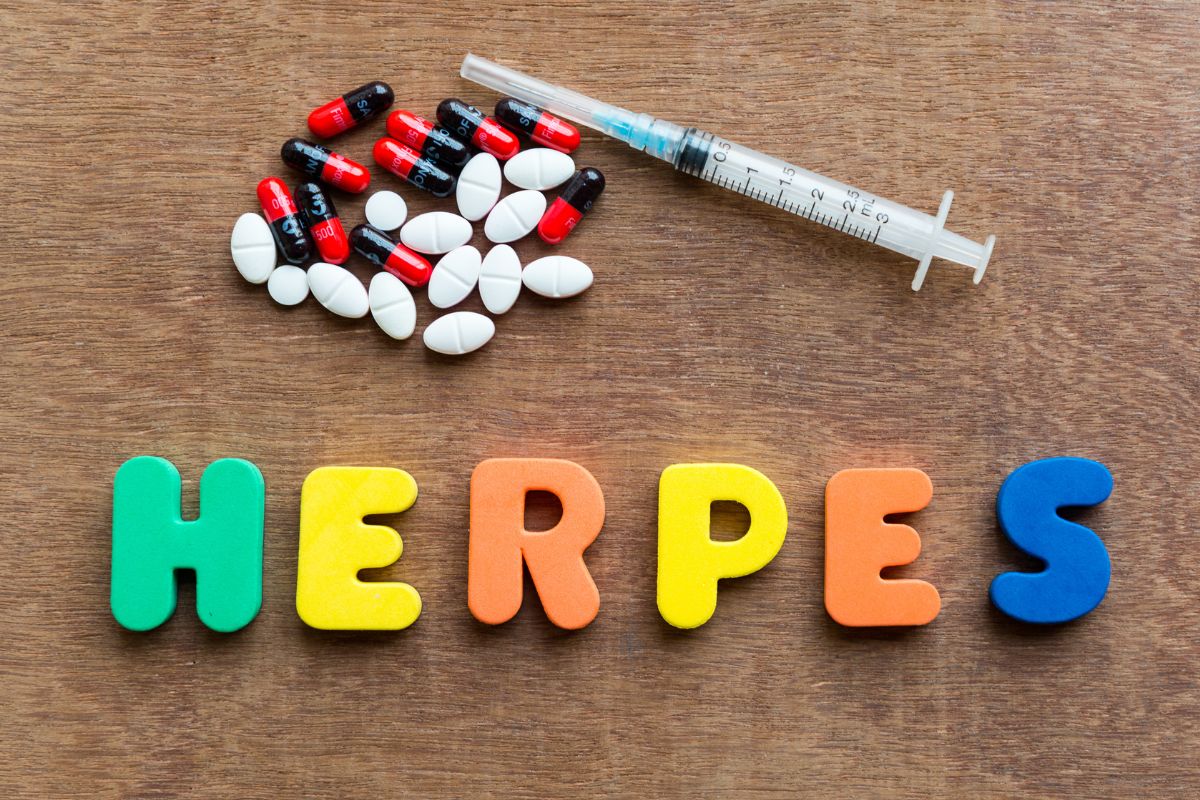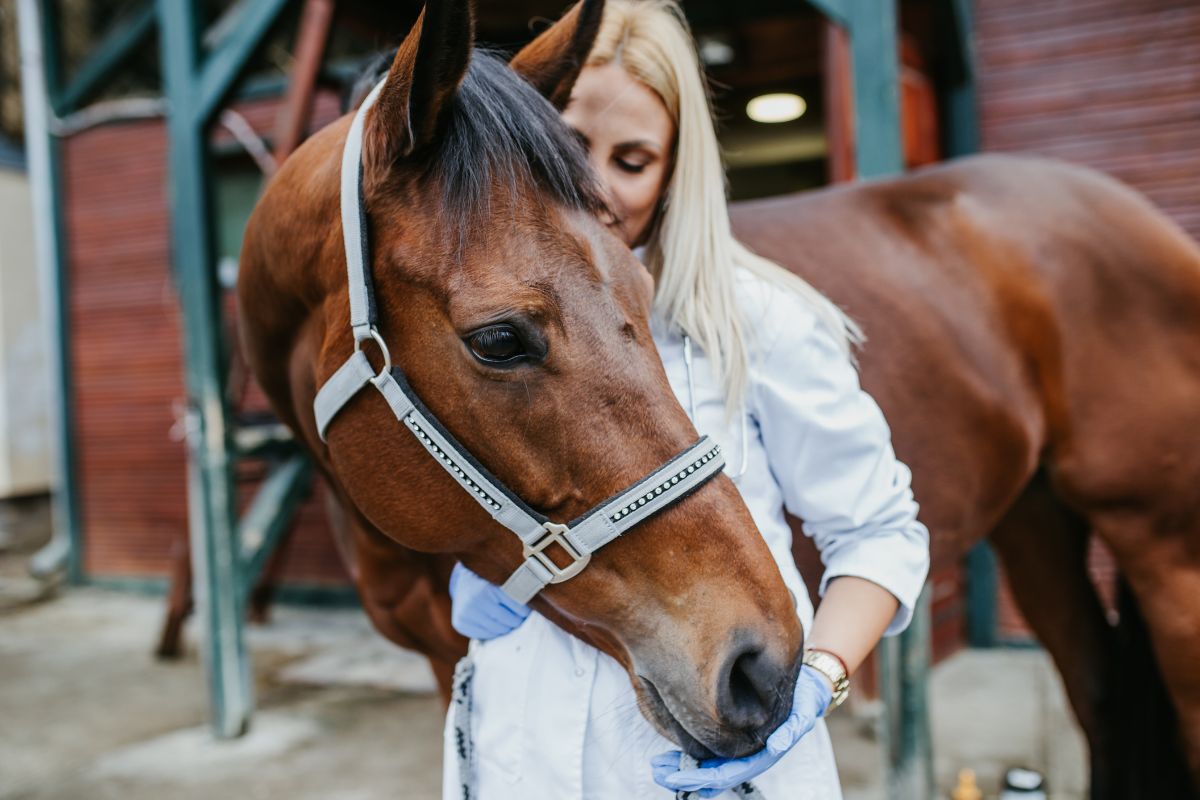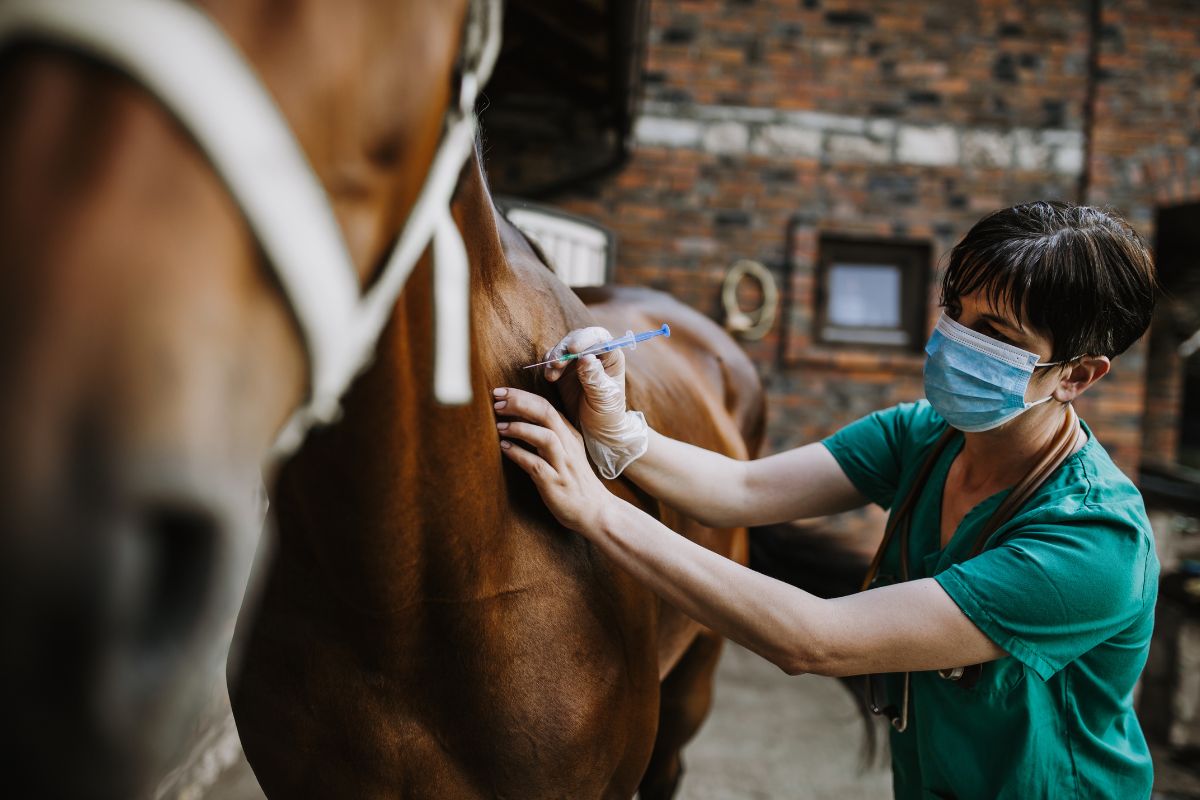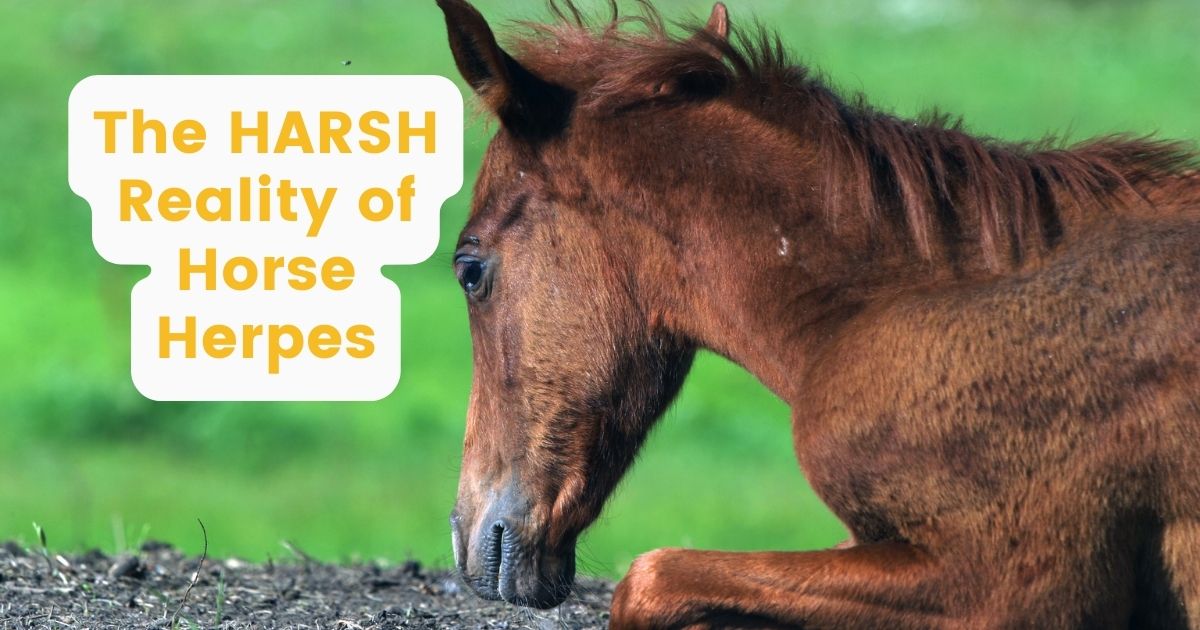What is Horse Herpes?
Ask a horse owner about horse herpes, and you probably face a tired-looking owner. Equine herpes, also called “horse herpes,” is a viral infection caused by the equine herpes virus, and it commonly causes sporadic horse herpes outbreaks in herds worldwide.
The issue with horse herpes is that it can cause various problems, including respiratory-, ocular-, and neurological diseases. Keep reading to find out more about horse herpes!

The Causes of Equine Herpes
The Equine herpes virus is a type of Alphaviridae virus, and most horses have been infected with the virus at some point, most of the time, with little to no symptoms or side effects. By professionals and people within the horse community, it is often just termed EHV.
There are currently several different types of viral equine herpes in the Alphaviridae family, but five of them are relevant for our horses. These five types of EHV can cause equine virus outbreaks, and especially EHV-1, EHV-3, and EHV-4 pose a health risk for domestic horses globally.
How is EHV-1 in Horses Transmitted?
Equine herpes virus is, in many ways, unlike the human herpes virus we know. Still, they share a significant common ability to establish a latent infection within the host organism. Being latent means, it is still present within the organism, typically the neuron and lymphatic tissues, but causes no symptoms.
The latent infection can, however, be reactivated later on due to stress, corticosteroid treatment, or other infections. The reactivation will then lead to symptoms appearing and a chance of infection in susceptible horses nearby.
The infection spreads between horses typically in one of three ways:
- Via the respiratory route.
- Via fetuses, fetal membranes, or fluids.
- Via indirect transmission.
Infected foals can be a significant transmission source as they can spread the virus to other horses and the environment. In the environment, the equine herpes virus can survive for up to two weeks and even longer in suitable fomites.
It can therefore be challenging to contain equine herpes virus outbreaks.
The Clinical Signs of EVH-1 and EVH-4
Clinical symptoms will vary depending on the strain of EHV involved in the infection and whether other comorbidities are present. EHV-2 is primarily associated with eye diseases, EHV-3 with genital lesions, and EHV-5 with a respiratory condition. However, none of these three strains is what professionals or owners worry most about.
EHV-1 in Horses
EHV-1 and EHV-4 are the two most common equine herpes virus species. EHV-1 strains typically develop within the placenta of pregnant mares, the respiratory system, or the central nervous system. However, EHV-1 is most commonly associated with being a cause of abortion in mares.
An issue with EHV-1 is also that it is far more virulent than other strains, meaning it spreads more rapidly and can cause what is known as “abortion storms” with herds with weak immunity. The foals that survive to term may then be born weak, often dying within the first couple of days.
Affected horses tend to develop a very characteristic biphasic temperature that changes from high to low and back. Abortion is the most apparent symptom, and respiratory symptoms like a nasal discharge can precede it, or the horse can be clinically normal.
The abortions tend to occur in the last third of the pregnancy and two to twelve weeks after infection.
In a few cases, infection with EHV-1 in horses can also lead to neurological disease.
EHV-4 in Horses
EHV-4 has a predilection for the respiratory system and lymph nodes, commonly causing respiratory infections in especially young horses ages 4 to 12 months. It can also affect adult horses, but these infections are often subclinical – meaning no symptoms are present.
Initial symptoms in foals include fever, lethargy (tiredness), lack of appetite, enlarged lymph nodes, nasal discharge, and coughing.

What to Do if You Suspect Infection
There are quite a few diseases with symptoms similar to the equine herpes virus, meaning diagnosis only on clinical symptoms is impossible. That is why it is essential to contact a veterinarian immediately if you suspect a horse is suffering from horse herpes.
As this is an exceptionally infectious disease, no matter the strain of EHV, a horse suspected of suffering from equine herpes virus should be isolated, if possible, from all healthy horses in the herd.
All water and feed buckets should be cleaned and disinfected, along with mucking equipment, tack, and anything else that has come into contact with the affected horse. It is also advisable to halt any transport of horses to and from the herd, if at all possible because it is likely that the affected horse has already infected other individuals in the herd.
A veterinarian can make a definitive diagnosis by PCR or virus isolation, often obtained from nasal swabs or blood samples. In some cases, a veterinarian can also diagnose aborted fetuses and their characteristic lesions.
How is Horse Herpes Treated?
As horse herpes is a viral infection, no specific treatments are available. But you can get far with supportive therapy, antivirals, pain management, and plenty of fluid. Antibiotics may be helpful in cases with secondary bacterial infections.
The aim is to minimize and alleviate some symptoms, including breaking the fever and preventing unnecessary pain. In these cases, the horse must keep drinking and eating, allowing the body to fight the infection itself naturally.
Horses should, of course, rest while ill and only gradually return to work once they recover. Returning to full work too quickly may cause a reactivation of the latent disease.
Most horses will recover from infection with the herpes virus, and a mare that has suffered an abortion should not suffer permanent damage; she can still become pregnant and carry a future foal to term. However, the disease is likely to become latent, which is why it will, from then on, always be necessary to keep an eye out for future clinical symptoms.
Important Information on Preventing Equine Herpes
Attempting to prevent the equine herpes virus from spreading is essential worldwide. The best ways to avert horse herpes outbreaks include:
- Good management of breeding stock.
- Good hygiene during breeding.
- Vaccinations.
Significantly vaccination will diminish the risk of EHV infection, although it does not provide full coverage. Inactivated EHV-1 and EHV-4 vaccines are available, and it is advisable to seek veterinary assistance to ensure correct vaccination regimes.
Good management of breeding stock includes isolating any new horse introduced to the herd for at least thirty days to monitor it for signs of infectious diseases. If it shows no clinical signs of equine herpes virus (or other diseases) after thirty days, it should be safe to admit it to the flock. However, these actions are not possible at all properties, why it is only advisable.
What is EHM?
EHM is an abbreviation for the disease Equine Herpesvirus Myeloencephalopathy. It is a type of disease commonly caused by equine herpes virus 1 (EHV-1) and, in sporadic cases, by EHV-4.
It spreads from horse to horse through bodily fluids like nasal discharge or aerosol droplets or by the horse coming into contact with contaminated surfaces or fomites, like water, feed, and transport vehicles. Humans can also spread the disease through contaminated gloves, hands, or clothes.
EHM is a neurological disease occurring in a minority of horses exposed to the equine herpes virus.
EHM is a very severe condition and can be life-threatening. Clinical symptoms include the same as with the regular EHV-1 and EHV-4 infections, but also neurological symptoms like:
- Depression.
- Ataxia (Lack of coordination).
- Loss of tail tonus.
- Hind limb weakness.
- Loss of ability to control the bladder.
- Loss of ability to stand up.
- Leaning against walls to maintain balance.
There is no cure for EHM, and the focus is solely on supportive therapy. The prognosis for horses infected with EHV who develop EHM is poor, with fatality as high as 30% in some regions.
The Two Different Strains of EHV-1
It is important to note that EHM, although severe when it occurs and scary to experience for any horse owner, is rare.
Unfortunately, professionals do not know why some horses develop neurological symptoms that most horses do not. So the best thing you can do for any horse is to adhere to the same biosecurity measures as you would minimize the risk of regular EHV-1 and EHV-4.

Conclusion
Horse herpes is a worldwide pain in horse owners’ life, causing heartache and sick animals wherever an outbreak occurs. But, it is also essential to know that horses suffering from EHV infections, latent or with clinical symptoms, can recover and be strong and happy in most cases.
Just remember biosecurity to avoid unnecessary risks, vaccinate horses according to the regimes, and check for clinical symptoms. Your horse should stay happy and healthy or be back on all four feet in no time!
